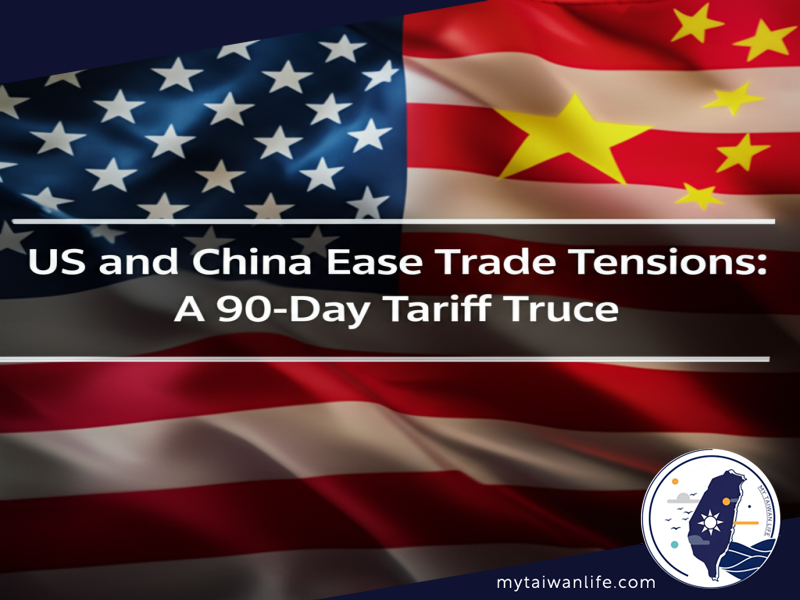US and China Ease Trade Tensions: A 90-Day Tariff Truce
Taiwan Watches as US-China Trade War Temporarily Cools

In a significant development for global trade, the United States and China have agreed to a temporary truce in their ongoing trade dispute, as announced in a joint statement. This move will see a temporary reduction in tariffs imposed on each other's products, providing a 90-day window for both nations to resolve their underlying disagreements.
According to the statement, and confirmed by officials in Geneva, Switzerland, the combined US levies on most Chinese imports will be reduced from 145% to 30%, including the rate tied to fentanyl, effective immediately. Concurrently, China will lower its duties on US goods from 125% to 10%.
“We are in agreement that neither side wants to decouple,” stated US Secretary of the Treasury Scott Bessent, adding that discussions on fentanyl have been “robust and productive.” These talks may lead to “purchasing agreements” by China.
Bessent clarified that the tariff reductions do not apply to sectoral duties imposed on all US trading partners, and the tariffs applied on China during the first administration of US President Donald Trump remain in place.
The US statement also indicates that a mechanism will be established to facilitate ongoing discussions regarding economic and trade relations.
Xinhua news agency reported that China continues to approach its relationship with the US based on mutual respect. China is committed to the stable development of relations with the US, adding that "imposing pressure and threats are not the right way to deal with China."
This announcement signals a step toward de-escalating a tariff war that has significantly impacted trade across the Pacific Ocean. Markets reacted positively to the news, with Chinese stocks recovering losses. US Trade Representative Jamieson Greer emphasized the US's desire for more balanced trade with China, indicating a productive outcome from this week's discussions.
While the White House initially referred to the agreement as a "trade deal," the specifics of its goals and the timeline for achieving them remain unclear. China has previously requested the removal of all tariffs imposed by the US this year, a request that clashes with the US goal of reducing or eliminating the trade deficit.
Despite the positive market reaction, past experiences suggest that reaching a detailed agreement could be a lengthy process. In 2018, a similar agreement to pause the dispute was short-lived, resulting in further tariffs and talks before the "Phase One" trade deal in January 2020. Notably, China subsequently failed to meet the purchase agreement within that deal, and the US trade deficit with China increased during the COVID-19 pandemic, contributing to the current trade situation.
Other Versions
EE.UU. y China alivian sus tensiones comerciales: Una tregua arancelaria de 90 días
Les États-Unis et la Chine apaisent les tensions commerciales : Une trêve tarifaire de 90 jours
AS dan China Meredakan Ketegangan Perdagangan: Gencatan Senjata Tarif 90 Hari
Stati Uniti e Cina attenuano le tensioni commerciali: Tregua tariffaria di 90 giorni
米中、貿易摩擦を緩和:90日間の関税休戦
미국과 중국의 무역 긴장 완화: 90일간의 관세 휴전
Binawasan ng US at China ang Tensyon sa Kalakalan: Isang 90-Araw na Tigil-Gera sa Taripa
США и Китай ослабляют торговую напряженность: 90-дневное тарифное перемирие
สหรัฐฯ และจีนผ่อนคลายความตึงเครียดทางการค้า: การสงบศึกด้านภาษี 90 วัน
Mỹ và Trung Quốc Hạ Nhiệt Căng Thẳng Thương Mại: Tạm Đình Chiến Thuế Quan 90 Ngày

